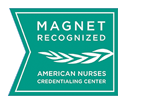Files
Download Full Text (152 KB)
Download Acute Chest Syndrome-Definition (187 KB)
Download Typical Laboratory Findings in Sickle Cell Disease (241 KB)
Download Is the Pt. Exhibiting Signs Necessitating PICU Care? (196 KB)
Download Prepare for Exchange Transfusion (204 KB)
Download Severe or Rapidly Progressing ACS (191 KB)
Download Acute Chest Syndrome — Discharge Home (172 KB)
Download Acute Chest Syndrome-Reference List (137 KB)
Publication Date
1-2021
Disclaimer
These guidelines do not establish a standard of care to be followed in every case. It is recognized that each case is different and those individuals involved in providing health care are expected to use their judgment in determining what is in the best interests of the patient based on the circumstances existing at the time. It is impossible to anticipate all possible situations that may exist and to prepare guidelines for each. Accordingly, these guidelines should guide care with the understanding that departures from them may be required at times.
Disciplines
Pediatrics
Recommended Citation
Children's Mercy Kansas City, "Sickle Cell: Acute Chest Syndrome" (2021). Clinical Pathways.
https://scholarlyexchange.childrensmercy.org/care_models/1




